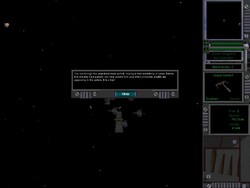Might & Magic X Update: Travelling, Questing, Itemization and more
Might & Magic X Update: Travelling, Questing, Itemization and more
Game News - posted by Infinitron on Wed 21 August 2013, 00:03:39
Tags: Limbic Entertainment; Might & Magic X - Legacy; UbisoftToday's Might & Magic X Legacy open development blog update has details about a whole bunch of game mechanics, including travelling, questing, itemization and more. Since MMX's itemization is a topic that has recently come up in discussions here on the Codex, I'll quote that part:
By the way, did you know that Ubisoft's Arnaud Fremont has played Arcanum SEVEN TIMES??
EPIC LOOT, ITEMS AND INVENTORY
There are four general ways to get items in the game: monster drops, quest rewards, NPCs and treasures. And once you get an item, you have to put it somewhere. Your characters probably don’t want to carry lots of stuff in their hands while exploring the world. That’s when the inventory is for. Your four party members share it among them. Are you a pack rat who needs a big backpack? There’s a hireling for that!
Each item you get can be stored in a single slot of the party inventory, however consumable items (like potions) are stackable. Most items can only be equipped in the dedicated slots of the character equipment, and some require a certain tier of a certain skill in order to be equipped.
Some items can be bought from and sold to NPCs, some can break and be repaired. Some items can be consumed, but they can’t be dropped to the ground.
(However, you can decide not to pick up loot from a chest if you don’t want to. And if your inventory is full and you kill a monster, the superfluous loot will stay on the ground until you pick it up.)
Some items hide their attributes except for class, type and subtype until they get identified. Before that, they cannot be equipped, and they will only sell for a very small price. There are several ways to identify an item; one of them is to pay an NPC to do it.
ITEM CLASSES
Items are categorized into the following classes:
Except for consumable items, all items can have up to two enchantments. Different item classes and types have different pools of possible enchantments. Enchantments are indicated in the item name by a prefix (e.g. Fire Dagger) or/and a suffix (e.g. Dagger of Might).
Prefixes relate to one of the magic schools and their effects. They can for example add elemental damage, or increase protection against the corresponding school. Suffixes on the other hand are more versatile, they can consist of any combination of several conditions, a chance and an effect.
RELICS
In contrast to the ordinary generic items, relics are unique. They are assigned to a certain class, type and subtype, they can have more than two enchantments, and they can level up, which also has an impact on their attributes. While equipped, relics receive the same amount of XP their wielders are receiving.
There are four general ways to get items in the game: monster drops, quest rewards, NPCs and treasures. And once you get an item, you have to put it somewhere. Your characters probably don’t want to carry lots of stuff in their hands while exploring the world. That’s when the inventory is for. Your four party members share it among them. Are you a pack rat who needs a big backpack? There’s a hireling for that!
Each item you get can be stored in a single slot of the party inventory, however consumable items (like potions) are stackable. Most items can only be equipped in the dedicated slots of the character equipment, and some require a certain tier of a certain skill in order to be equipped.
Some items can be bought from and sold to NPCs, some can break and be repaired. Some items can be consumed, but they can’t be dropped to the ground.
(However, you can decide not to pick up loot from a chest if you don’t want to. And if your inventory is full and you kill a monster, the superfluous loot will stay on the ground until you pick it up.)
Some items hide their attributes except for class, type and subtype until they get identified. Before that, they cannot be equipped, and they will only sell for a very small price. There are several ways to identify an item; one of them is to pay an NPC to do it.
ITEM CLASSES
Items are categorized into the following classes:
- armor (increases armor value)
- jewelry (no general effect)
- shields (increases armor value)
- melee weapons (add melee damage and critical melee damage)
- magical foci (increase critical damage for spells)
- ranged weapons (add ranged damage and ranged critical damage)
- potions (consumed upon usage)
- scrolls (consumed upon usage)
Except for consumable items, all items can have up to two enchantments. Different item classes and types have different pools of possible enchantments. Enchantments are indicated in the item name by a prefix (e.g. Fire Dagger) or/and a suffix (e.g. Dagger of Might).
Prefixes relate to one of the magic schools and their effects. They can for example add elemental damage, or increase protection against the corresponding school. Suffixes on the other hand are more versatile, they can consist of any combination of several conditions, a chance and an effect.
RELICS
In contrast to the ordinary generic items, relics are unique. They are assigned to a certain class, type and subtype, they can have more than two enchantments, and they can level up, which also has an impact on their attributes. While equipped, relics receive the same amount of XP their wielders are receiving.
By the way, did you know that Ubisoft's Arnaud Fremont has played Arcanum SEVEN TIMES??
There are 83 comments on Might & Magic X Update: Travelling, Questing, Itemization and more














